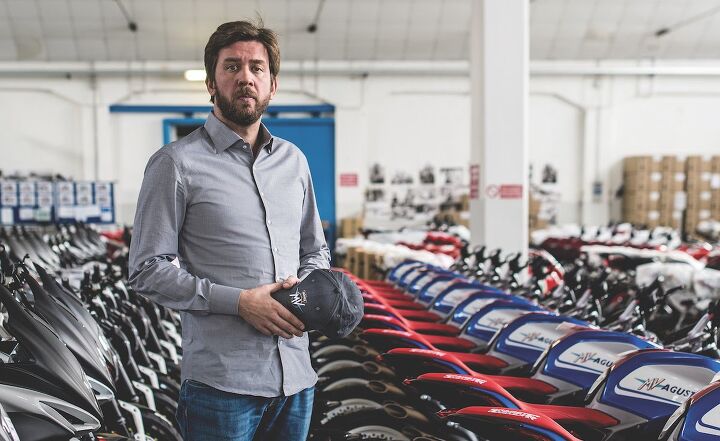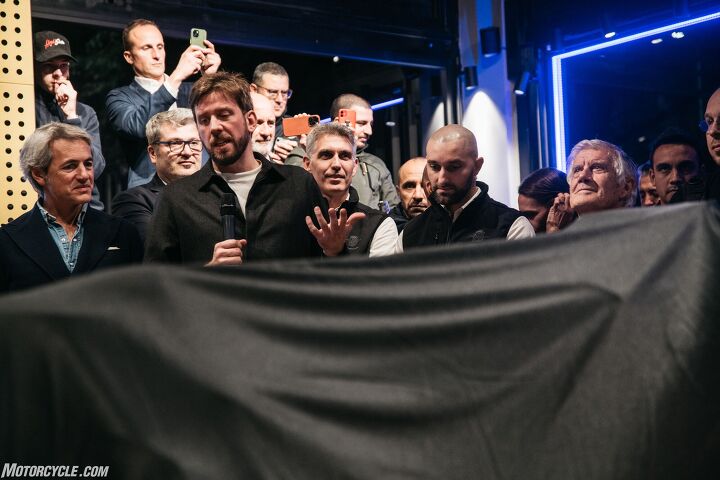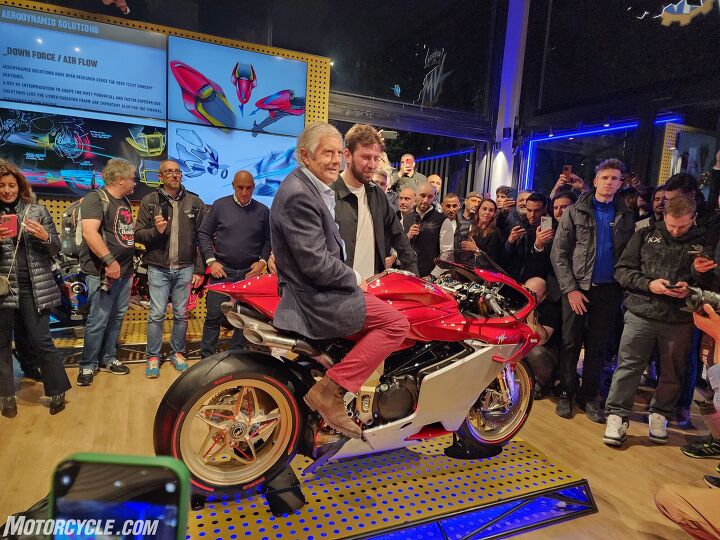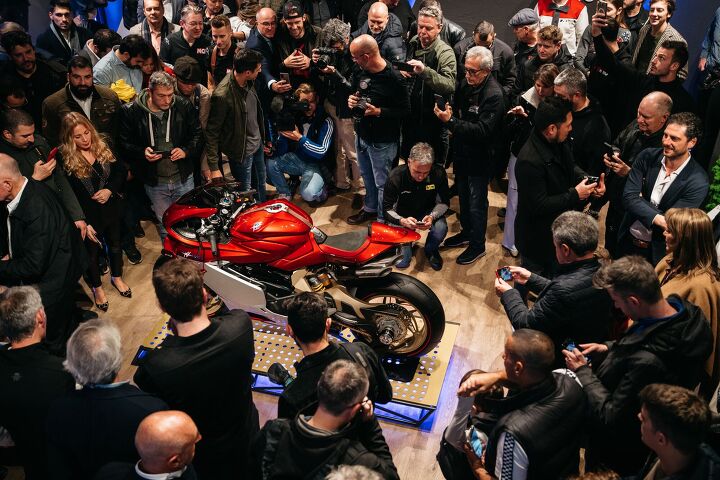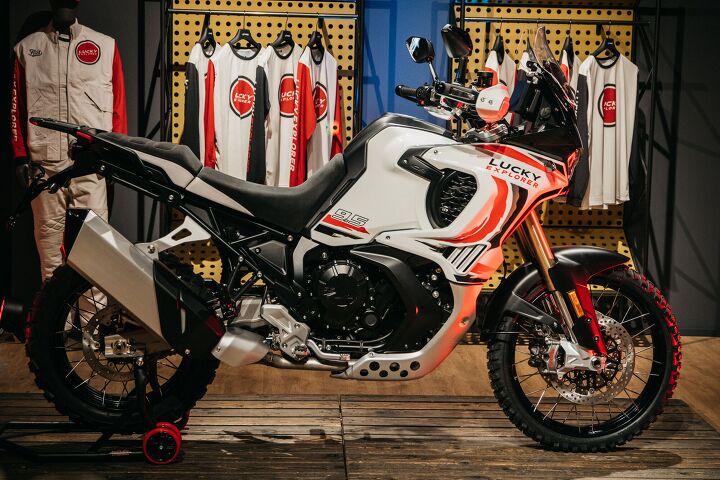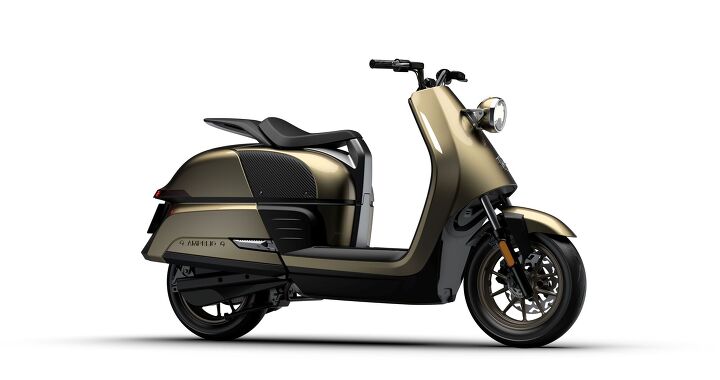Motorsports Racing News & Blog Articles
MV Agusta Owner Timur Sardarov Interview
It was the talk of last week’s 2022 EICMA Show: MV Agusta, Italy’s most prestigious and historic manufacturer, winner to date of 270 Grand Prix races, 38 World Riders’ Championships, and 37 World Constructors’ Championships, had supposedly been acquired by KTM. Stefan Pierer, the most powerful man in European motorcycling, had captured his most iconic trophy brand yet, to add to his roster of Euro-marques including KTM, Husqvarna and GasGas. Indeed, according to one supposedly authoritative source, he’d be sealing the takeover deal with MV’s current owner, Russian entrepreneur Timur Sardarov, on the Thursday before the Valencia GP, November 3. This would permit him to announce at the final race of the 2022 season that MV Agusta would be returning to MotoGP racing in 2023 – albeit as a KTM subsidiary.
Only one thing was wrong: it wasn’t true. What was announced on November 3 was that MV Agusta and Stefan Pierer’s private holding company, Pierer Mobility, had reached an agreement on future strategic cooperation, as a consequence of which KTM AG would acquire a 25.1% stake in MV Agusta Motor S.p.A. According to the press release announcing this acquisition, “Within the framework of this strategic partnership between the two European motorcycle manufacturers, KTM AG, a company of Pierer Mobility, will provide MV Agusta with supply chain support and take over the purchasing. Furthermore, in the course of this cooperation, MV Agusta will partly distribute its product range via Pierer Mobility’s worldwide distribution network.”
MV Agusta has been entirely Russian-owned since Timur Sardarov, now 40, completed his family’s acquisition of the historic Italian brand in September 2019, with a further injection of cash sufficient to give it 100% ownership of the company. Up to that point he was believed to have invested almost 100 million euro in acquiring full control of MV, most of which had been devoted to recapitalising the company after three decades of its ownership, flipping between the Castiglioni family and various outside interests: Proton, Gevi Bank, Harley-Davidson, and AMGhad all taken turns since the late Claudio Castiglioni acquired MV from the Agusta family in 1991.
Moscow-born Sardarov moved to England in 2003, and with two daughters born there, made London his home until 2019, when as a mark of his commitment to MV Agusta, he moved to Italy. His oligarch father Roman is one of the 500 richest men in Russia, his fortune deriving from the Comstar Energy Group, one of the country’s largest oil and natural gas companies. Timur Sardarov founded a UK-based private jet airline in 2005, but he sold this in 2013 to concentrate on his capital venture business Black Ocean Investment, which he’d established in 2006 in conjunction with British partner Oliver Ripley. In 2016 he met Giovanni Castiglioni, as an MV Agusta owner already, with a Dragster RR amongst his various bikes, which then included three Harleys (a Sportster, a Softail, and a Fat Boy), and a Ducati Diavel. Sardarov and Castiglioni hit it off, so Black Ocean essentially financed the restructuring of MV Agusta after its then-latest bout of serial financial uncertainty. Sardarov assumed a hands-on role at MV’s lakeside Varese factory in June 2017, and since 2019 has been the outright owner of the prestigious manufacturer – which he acquired just in time to have to grapple with the effects of the COVID pandemic. Having survived that with ‘only’ a four-week shutdown at MV Agusta’s Varese plant, the next hurdle he faced was the supply chain crisis which has hit manufacturers in the process of regrouping, in all countries, and of all sizes, on two wheels and four. And then Vladimir Putin decided to invade Ukraine, with consequences we’re still grappling with globally today.
 To find out what’s really happening I sat down with Timur Sardarov over a glass of wine at the end of a long Media day at the EICMA Show, at which this year MV Agusta did not have a stand. Instead, he unveiled its new 2023 models at the company-owned dealership in downtown Milan – well, all except the first MV scooter in over 60 years, the electric Ampelio model developed in conjunction with Taiwanese scooter giant Kymco, which had been revealed earlier in the day on that company’s EICMA Show display. But the bikes which would surely have been acclaimed as the stars of the show had they been on display there, the four-cylinder MV Agusta Superveloce 1000 Serie Oro, and the neo-retro 921 S, as well as the final production versions of the Lucky Explorer 5.5 and 9.5 models, were all revealed to an army of journalists that evening at MV Milano. Having posed for the media alongside Giacomo Agostini and Paris-Dakar winner Edi Orioli, Timur retired to his private office, popped a cork and poured a glass for each of us. Now it was time to talk.
To find out what’s really happening I sat down with Timur Sardarov over a glass of wine at the end of a long Media day at the EICMA Show, at which this year MV Agusta did not have a stand. Instead, he unveiled its new 2023 models at the company-owned dealership in downtown Milan – well, all except the first MV scooter in over 60 years, the electric Ampelio model developed in conjunction with Taiwanese scooter giant Kymco, which had been revealed earlier in the day on that company’s EICMA Show display. But the bikes which would surely have been acclaimed as the stars of the show had they been on display there, the four-cylinder MV Agusta Superveloce 1000 Serie Oro, and the neo-retro 921 S, as well as the final production versions of the Lucky Explorer 5.5 and 9.5 models, were all revealed to an army of journalists that evening at MV Milano. Having posed for the media alongside Giacomo Agostini and Paris-Dakar winner Edi Orioli, Timur retired to his private office, popped a cork and poured a glass for each of us. Now it was time to talk.
AC: Timur, it’s been announced that you’ve sold 25.1% of MV Agusta to KTM – or is that really to Pierer Industrie, which would mean Stefan Pierer personally?
TS: The shares have been acquired by KTM, but we didn’t sell them outright – the money we raised from that all goes back into the business in order to recapitalise it. I’m not just selling off a slice of the MV Agusta company, it’s more a question of establishing a partnership with KTM as a company, and Stefan Pierer personally. But of course, in the future, it may be he’d like KTM to be a bigger part of MV Agusta as a business, and if so we’ll discuss that at a later stage. Right now, I believe the structures we’re establishing will allow MV Agusta to become profitable very quickly, by leaning on a big industrial partner who has a vast supply network, and we’re also going to cooperate on establishing a joint sales and distribution operation. KTM will support MV Agusta in its supply chain management, and will take over MV’s purchasing department. This will help streamline component acquisition from common suppliers, and should benefit MV in terms of cost reduction.
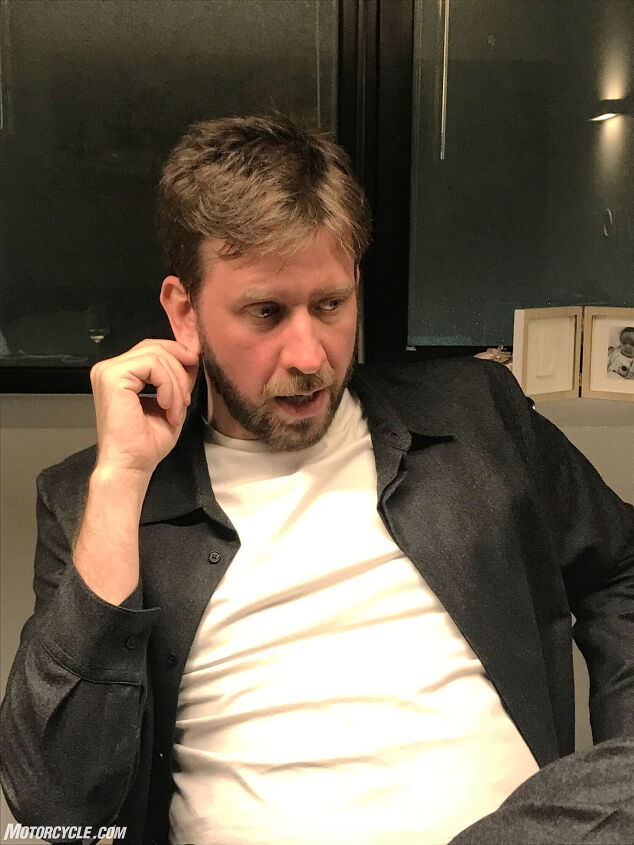 AC: Will your joint sales and distribution entail just the USA, as you previously announced, or will it expand all over the world?
AC: Will your joint sales and distribution entail just the USA, as you previously announced, or will it expand all over the world?
TS: All over the world, which will allow the sales force of KTM to improve the standard of MV Agusta’s retail representation. So we’re pretty excited about this – I think we can see clearly the benefits for both companies as well as MV’s customers in doing this, and how it’s going to work.
AC: Did Stefan Pierer call you to start this discussion, or did you call him?
TS: To be honest, KTM was always circling around MV Agusta since before we acquired it. But I think what we’ve arrived at now is more of a partnership, because KTM understands that this business needs to be run by an entrepreneur, rather than by a corporate executive – it needs someone with passion for the brand, and an understanding of what our customers are looking for. MV Agusta needs to be maintained in that spirit.
AC: Yes, but in the past you have been in the position of Stefan Pierer, when you did the same thing to the Castiglionis that he is now doing to you, in terms of recapitalising the business.
TS: Absolutely, but Mr. Pierer doesn’t do it personally, he does it through the KTM structure, and KTM is a behemoth, a business with thousands of people. I’ve done it as an entrepreneur with a personal hands-on involvement in every aspect of the business, and that’s a different story.
AC: How many times have you met him?
TS: Quite a few times, actually. I first met him a long time ago, four or five years back when I was first involved with MV, then I kept meeting him in various places after that. And then more recently, when we were re-organising our US distribution, we’ve been speaking about this type of partnership deal, and we’ve now decided to proceed with it.
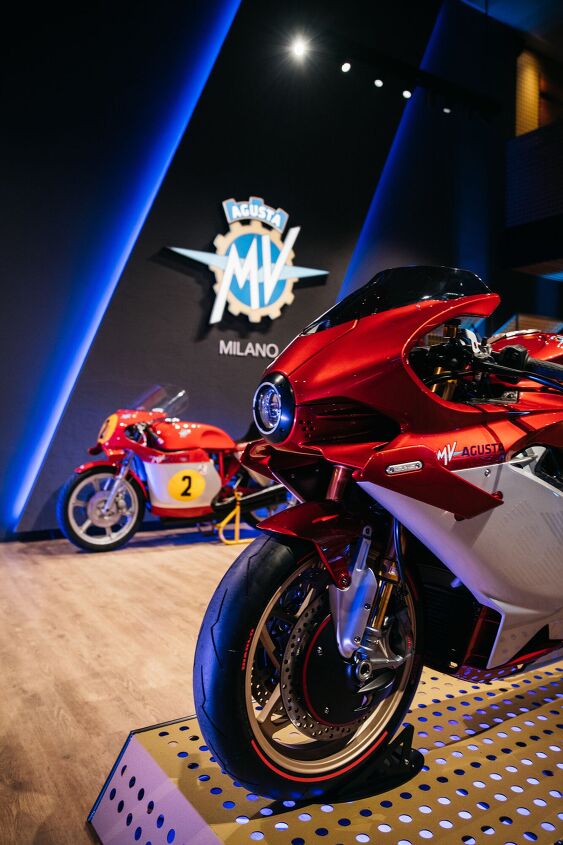 As I said just now, we have two major problems here at MV right now – one is parts supply, the other is distribution, and I believe signing the deal with KTM will allow us to resolve these problems successfully. We presently have about 260 suppliers, with 70% of them in Italy, and getting all the components we needed to start up again after the COVID shutdown was challenging, even from Italian suppliers. Take Brembo, for example – they’re in Bergamo, which was the most affected city in Europe by COVID-19, so their link in the supply chain was always shaky. But there were others, too – production was further disrupted because we’d been introducing several new models, so for example Superveloce carbon parts come from India, which had a very strict lockdown. We began assembly of that model, but the carbon parts didn’t come, so now we had only part-assembled Superveloces. Then a lot of carbon suddenly arrived, so we had to catch up completing those bikes without falling behind with others!
As I said just now, we have two major problems here at MV right now – one is parts supply, the other is distribution, and I believe signing the deal with KTM will allow us to resolve these problems successfully. We presently have about 260 suppliers, with 70% of them in Italy, and getting all the components we needed to start up again after the COVID shutdown was challenging, even from Italian suppliers. Take Brembo, for example – they’re in Bergamo, which was the most affected city in Europe by COVID-19, so their link in the supply chain was always shaky. But there were others, too – production was further disrupted because we’d been introducing several new models, so for example Superveloce carbon parts come from India, which had a very strict lockdown. We began assembly of that model, but the carbon parts didn’t come, so now we had only part-assembled Superveloces. Then a lot of carbon suddenly arrived, so we had to catch up completing those bikes without falling behind with others!
We often forget that this year started with Omicron – I know it seems a long time ago, but that started the year off. Then once that was over, the second part of the year was very difficult due to supply issues, and demand issues. We were hoping to produce many more bikes this year than we were able to do, owing to the different issues of logistics, China, the war in Ukraine, and now there’s inflation, and component supplies. Every day since I took over this company as a CEO, this was always an issue. And so that’s why for me to partner up with a big business, with a big industrial partner like KTM – it makes my life easier. I want to focus on developing the business, on making the company better and more efficient – but it’s very hard to do this when you’re constantly thinking about whether we should ship our wheels from China by plane or by boat!
AC: With this cash flow problem caused by an inability to ship complete bikes to customers, do you then have to pick and choose about who gets any income you receive, which was the old Castiglioni problem?
TS: Sure, and I don’t want to be like that, because for me, my number one interest – and I know it sounds a bit naïve, but it’s honestly true – is MV Agusta. I want MV Agusta to be strong, and I think this partnership with KTM will ensure this by also drastically improving our distribution. This was what brought us together in the first place, and our agreement for KTM to handle MV’s distribution in the USA was the first step in our partnership. For us, to keep the level of exclusivity surrounding our products, we need to not just produce amazing bikes, we also have to make everything around the product, the dealer, the customer experience, the after-sales service, the accessories line, the lifestyle aura – we need to make it all perfect. And then there’s another thing – the company got through COVID OK, but now there’s a war in which a Russian factor is entailed. I’m a Russian, and I cannot get rid of, frankly speaking, this handicap. It doesn’t matter that I can criticize the decision to go to war as I did in a letter to our workforce, or that I lived in London for so many years and now in Italy – I’m still considered to be Russian, and it puts the company at risk.
So that’s why we didn’t only want to raise money by forming a partnership with another investor, but we also wanted to diversify MV Agusta’s corporate base, so that this company is not seen as being completely controlled by a Russian family. We had a lot of discussions with other different people, and some of the deals they offered were more attractive than the partnership we’ve agreed with KTM.
AC: Discussions with other motorcycle companies?
TS: With other companies, with other investors, yes. But at the end of the day, KTM will ensure the future stability of MV Agusta, given that we are agreed contractually on the principles of where MV Agusta has to go over the next five years – and I’m going to stay in the business to make sure that happens.
AC: So will you still continue to run MV Agusta?
TS: Yes, for sure. Of course I would like KTM to help me and to work together, but at the end of the day, MV Agusta cannot be run by a hired corporate person, it needs to have an individual who is invested in the company, who understands the brand. Because if you’re going to put just a manager there to run it, nobody will care about this brand, because the personality of the CEO or the family who owns it is very much connected with the creation of the products, and the passion these arouse.
AC: Is this why you decided to form a partnership with a motorcycle manufacturer, rather than with other outside investors from the financial industry?
TS: Yes, for sure. And I’m pretty certain KTM understands this, too. We will conceive the product and manufacture it, but they will source the components to do so, as well as take charge of distributing it to customers. We’re re-setting the company, and will now be able to focus on what we’re good at.
AC: How will MV Agustas be sold by KTM? Will it be through KTM dealerships, or will KTM establish a network of standalone MV Agusta dealerships?
TS: We’re going to develop a network together, so it’s going to be either multi-brand dealers, or standalone dealers, depending on the country, but it’s definitely going to mean better dealers overall. I hope some of our existing dealers will stay with us, because many of them have invested heavily in MV, and I’m really grateful to them for doing so, and I will make sure that they are still part of our family. But some other dealers simply haven’t performed, so we’ll be letting them go.
AC: Your most important potential market for MV Agusta is the USA, but the brand has always had a very limited presence there despite making bikes which appeal to American customers. Do you believe KTM will essentially allow you to secure the position in the US market that MV really should have had all along?
TS: That’s the most important element of this new strategy, which it’s in the interest of both KTM and MV Agusta to achieve – our interests are clearly aligned in expanding our US presence. We want to get volume, we want to sell better, and we want to sell more.
AC: To what extent will KTM’s involvement dilute the Italian element in the MV Agusta brand?
TS: Not one single bit. CRC will continue to define our new model strategy.
AC: So future MV Agusta models will continue to be designed in Italy?
TS: 100%.
AC: Will the bikes continue to be manufactured in Italy?
TS: 100%. It would be stupid for anyone to think that Italian products incorporating the heritage, the tradition and the style of this country can be produced anywhere else. Only Italians can design Italian products, and they must be made in Italy – and this was proven many times by different mistakes that certain people made. Aston Martins should be produced in the UK, Porsches in Germany, Ferraris in Italy, and Bugattis in France, and it’s the same thing with Italian motorcycles which are conceived here.
AC: However, is technical development something else, because KTM has an extremely strong R&D operation? Would it not be sensible to use that to help you develop new MV Agusta products?
TS: 100% we will do that. We’re going to share everything to do with technology, of course – I see no problem in this. Again, we’re super open to improving the way we run the business – we want to improve, we want to get better, we’re very respectful of KTM’s skills and technical knowhow, and we’re very open to sharing it. But, everything to do with the strong DNA points of MV Agusta needs to be preserved – by KTM, by us, by anyone working with either of us, because the only way for MV Agusta to prosper financially is by the quality of its DNA, and this whole DNA can be created only by MV Agusta.
AC: Presumably this will also apply to the dual-purpose Lucky Explorer ADV bikes that you’re developing? Here’s MV linking up with KTM, the world’s number one off-road manufacturer, so will you continue to develop these entirely in-house, or will you use KTM’s offroad expertise in doing so?
TS: For sure we’ll consult with them on this kind of development we’re absolutely open to doing this if it will allow us to produce a superior product. But the Lucky Explorer 9.5 is a different kind of model than anything KTM has yet made – they don’t have the equivalent models yet, since ours has a different philosophy, a different DNA of off-road. But for sure we want to learn more about this sector of the market, although I would say that no KTM off-road vehicles are presently similar to our LXP duo.
AC: When will you start delivering the 5.5 LXP to customers?
TS: Towards the end of March, and the 9.5 should come one month later.
AC: Where do you expect MV Agusta to be in three years’ time, with the collaboration of KTM?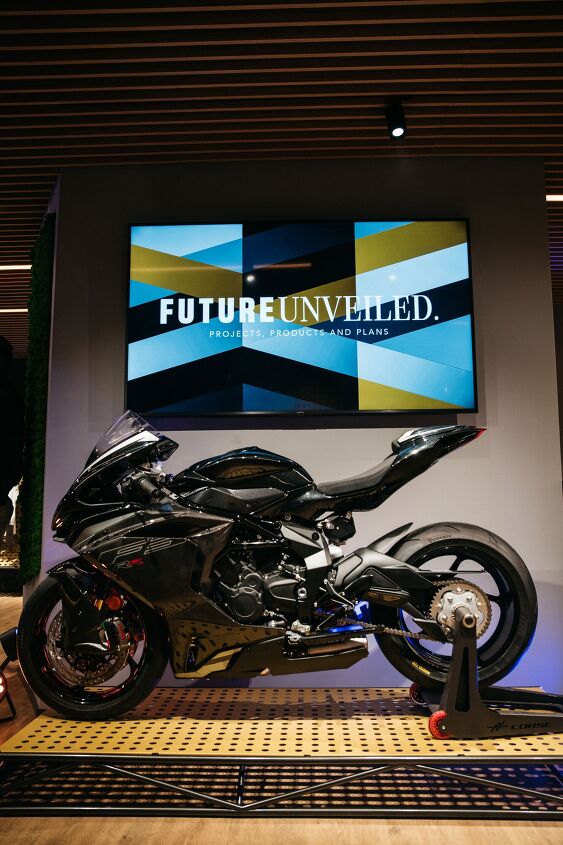
TS: I expect us to have tripled our production numbers, to be financially solid and on the track to the 2027 performance targets that we agreed with KTM.
AC: If Stefan Pierer comes to you and says, “I want to take MV Agusta back into MotoGP”, even if it entails badge engineering a KTM as an MV Agusta, what will you say?
TS: Sure – why not, as long as it doesn’t affect the DNA of our customer streetbikes.
AC: OK – but then what happens if Mr.Pierer comes to you and says, “I want to buy 100% of MV Agusta”?
TS: I repeat, with all due respect to KTM, MV Agusta needs to have an individual entrepreneur running it, not the manager he would have to install to run the company for him – he’s much too busy a person to be able to do this himself, even if he’d be well capable of doing so personally.
AC: Would you say that he and you are on the same wavelength?
TS: I think that we understand each other – I have a huge respect for what Stefan did for KTM, and I’m looking forward to working with him and to learning from him.
AC: He’s made a big entry into the electric market, and today you unveiled MV’s first electric scooter, the Ampelio, which you developed in conjunction with Kymco. Will that partnership continue, separate from KTM?
TS: Sure it will – yes. It’s not in our or KTM’s interest to drop any of our projects when they’re halfway done. And also, KTM is not really into scooters yet, while Kymco is one of the best scooter manufacturers in the world. We’re very happy with this collaboration, and look forward to continuing it.
Become a Motorcycle.com insider. Get the latest motorcycle news first by subscribing to our newsletter here.
The post MV Agusta Owner Timur Sardarov Interview appeared first on Motorcycle.com.
Copyright
© Motorcycle.com


